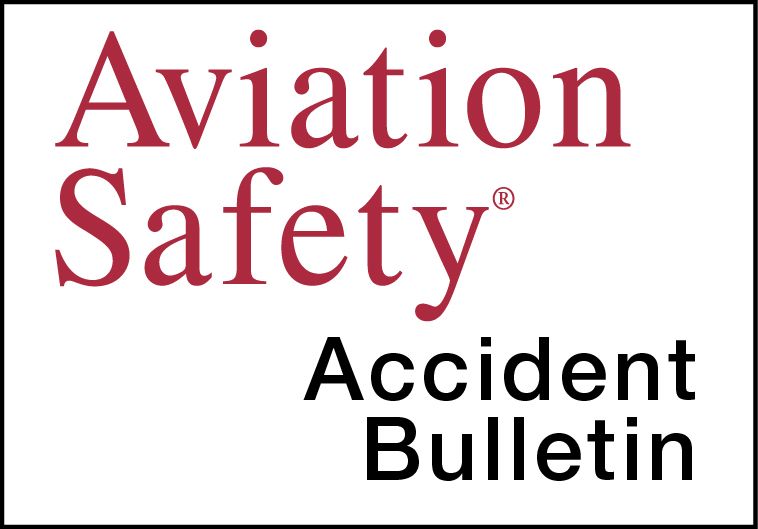AVweb’s General Aviation Accident Bulletin is taken from the pages of our sister publication, Aviation Safety magazine. All the reports listed here are preliminary and include only initial factual findings about crashes. You can learn more about the final probable cause on the NTSB’s website at www.ntsb.gov. Final reports appear about a year after the accident, although some take longer. Find out more about Aviation Safety at www.aviationsafetymagazine.com.
May 14, 2022, Miami, Fla.
Cessna 172H Skyhawk
The airplane was substantially damaged at about 1251 Eastern time when it was force-landed on a bridge following reported loss of engine power. The pilot was fatally injured, two passengers were seriously injured and five people on the ground received minor injuries. Visual conditions prevailed.
The flight departed Hollywood, Fla., at 1238, destined for Key West, Fla., but initially headed east to the shoreline for sightseeing. At 1248, when the airplane was southbound along Miami Beach at about 1200 feet MSL, the pilot transmitted a Mayday call and shortly told ATC he was putting the airplane down on a bridge.
The airplane touched down on the Herman B. Fultz Bridge in a northbound direction, with the left main landing gear tire and right main landing gear tire straddling the raised concrete median. It then struck a vehicle from behind on the northbound side, crossed over the median and struck another vehicle from the front, which was traveling on the southbound side, before it nosed over and came to rest on the northbound side of the bridge, facing southbound. The airplane traveled about 318 feet after striking the first vehicle before it came to rest. A post-crash fire ensued.
Examination revealed the fuel selector valve handle was destroyed by the fire. The valve was positioned between the both and right tank detents.
May 15, 2022, Monroe, LA
Cessna 421C Golden Eagle
At about 1320 Central time, the airplane experienced control system difficulties immediately after takeoff. The pilot and five passengers were not injured. Visual conditions prevailed.
After departure, the pilot heard a “loud pop” and the control yoke began oscillating violently. He declared an emergency and proceeded to a nearby airport for its longer runway and emergency services. The control yoke continued to oscillate until the airplane was on final approach. The pilot landed the airplane without further incident.
Examination revealed the right elevator had mostly separated from the horizontal stabilizer. There was a small puncture on the right side of the elevator. A small inboard, forward portion of the elevator remained attached. A review of the airplane’s maintenance logbooks revealed that the elevator trim system was re-rigged two days earlier.
May 17, 2022, Cleburne, Texas
American Aviation AA-1A Trainer
The airplane was substantially damaged in an apparent stall/ spin accident at about 1751 Central time. The student pilot sustained fatal injuries. Visual conditions prevailed.
Earlier, the student pilot had flown a passenger to a nearby airport and back. He departed solo at about 1734. About five miles south of the airplane’s base, he made a left turn at about 200 to 300 feet AGL to the west of his house while on a southerly heading and at a groundspeed of about 70 knots. The airplane subsequently turned right and flew to the west of the pilot’s house, also at about 200 to 300 feet AGL, on a northerly heading with groundspeed of about 90 knots. The airplane continued turning right and then rapidly descended. Witnesses reported very strong and gusty wind from the south at the time of the accident.
The airplane impacted a grassy field in a nose-down attitude with minimal forward momentum. Both wings were crushed and the tail section was twisted slightly to the right of the fuselage when viewed from the rear. Two propeller strike ground scars were located immediately in front of the wreckage.
This article originally appeared in the August 2022 issue of Aviation Safety magazine.
For more great content like this, subscribe to Aviation Safety!




































Re: May 17, 2022 Cleburne TX crash. Student flew a passenger? Unless the passenger had at least a private pilot certificate, the student’s action was illegal. Second, 200 to 300 AGL over his home? Unless I’m mistaken, isn’t the minimum altitude 500 feet vertical clearance?
Certificate: STUDENT PILOT
Date of Issue: 10/5/2018
Limits: CARRYING PASSENGERS IS PROHIBITED.